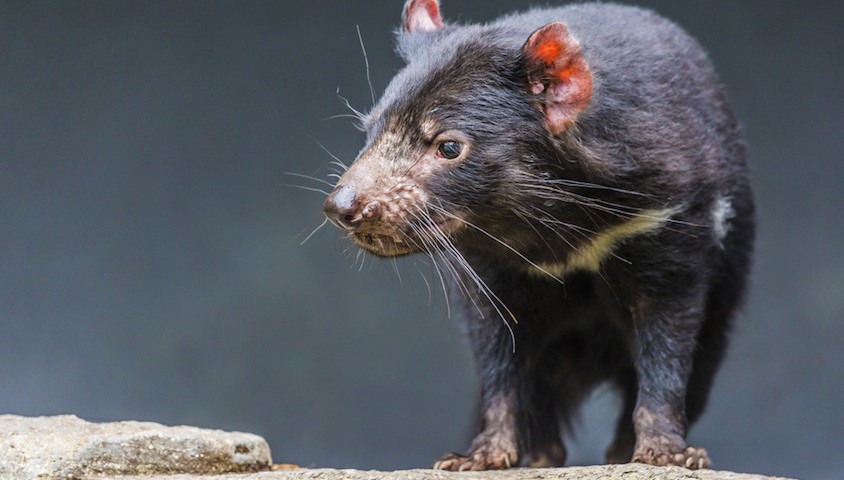A team of Australian, US and UK researchers have identified genes in Tasmanian devil populations that have changed as a result of exposure to facial tumour disease, indicating devils may be rapidly evolving to resist the disease.
Devil facial tumour disease (DFTD) – an infectious form of cancer identified as a significant threat to the survival of the species – has been killing Tasmanian devils for the past 20 years and caused populations to decline by up to 80 percent.
The new research announced by Griffith University and published today in Nature Communications, indicates Tasmanian devils may be beginning to evolve resistance to the disease after just four to eight generations of exposure.
Hamish McCallum, a professor of Griffith’s School of Environment and Environmental Futures Research Institute, highlighted his own models from seven years ago that predicted some wild populations of Tasmanian devils should now be extinct, saying “I am glad that I was wrong – it appears devils are saving themselves through evolution”.
“Cancer usually arises and dies with its host but in only two known cases in vertebrates – canine transmissible venereal cancer in dogs and DFTD – cancers have taken an extraordinary evolutionary step to become transmissible,” McCallum said.
“They spread not just within their host but to other animals, effectively becoming immortal. DFTD presents a unique research opportunity to study the early stages of the evolution of a new disease and transmissible cancer with its animal host.”
The long-term genetic analysis utilised the data collected by lead author Menna Jones from the University of Tasmania, which contains samples collected as far back as 1999, five years before research into facial tumour disease began.
Evolutionary geneticist Andrew Storfer from Washington State University and genomicist Paul Hohenlohe from the University of Idaho gained access to the devil tissue archives to compare the frequency of genes in specific regions of DNA before and after the emergence of DFTD.
The researchers found two genomic regions of DNA had changed significantly in response to the strong selection pressure caused by the devils’ cancer. They also identified five out of seven genes in these two regions were related to cancer or immune function in other mammals.
“The results are surprising because rapid evolution requires pre-existing genetic variation and Tasmanian devils have low levels of genetic diversity,” said McCallum.
“While the research suggests that devils in the wild may save themselves through evolution, it is essential to develop management strategies that assist them to do so.”
Professor Greg Woods, an immunologist at the University of Tasmania said the research provides a case for investigating cancer vaccines.
“This research provides support for vaccine research as devils appear to respond to the tumours. This will require functional data to confirm,” Woods said.


